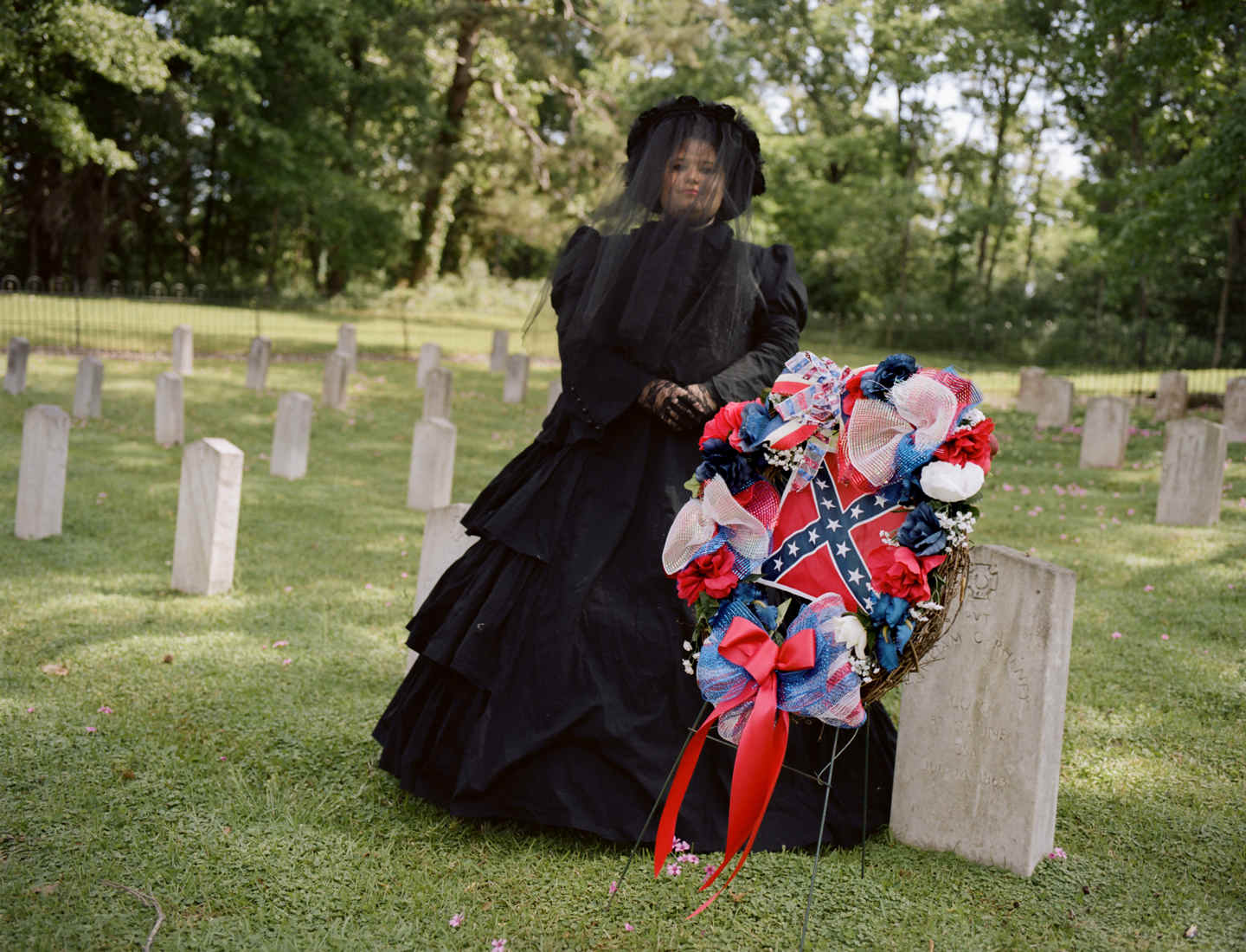Projects Galleries: American Women of the Far Right: GG_AmericanWomen_02

Tara Bradley poses for a portrait in her official “mourning gear”. She is a member of a group called the Order of the Confederate Rose. Though similar to groups like Daughters of the Confederacy, members of this group insist that they are not political and are open to all people. . On April 21, the group laid wreathes at a Confederate cemetery in Raymond, Mississippi for Confederate Memorial Month. The keynote speaker from the local Sons of Confederate Veterans group mentioned Hitler, the KKK and David Duke in his speech. One member of the Roses left in the middle, but it was later discovered that she did not leave in protest but because her feet hurt. After the ceremony, when pushed on dressing up as confederate slaveholders, members repeated false statistics like only 5 percent of Southerners owned slaves (in Mississippi, it was 55 percent), and argued that people also dress up as Union soldiers. When it was pointed out that no one dresses up like slaves, one woman exclaimed, ““We’d love to have someone that would!” All of the women present boasted about volunteer work and civic duty and none thought their costumes or activities were racists or offensive. Groups like the OCR help keep the traditions of the Confederacy – and it’s racists policies – alive and well.
- Projects
- Commissions
- Archive Selections
- Tearsheets
- News
- Bio, Press, Contact
Glenna Gordon © 2007-2018. Site design © 2010-2024 Neon Sky Creative Media